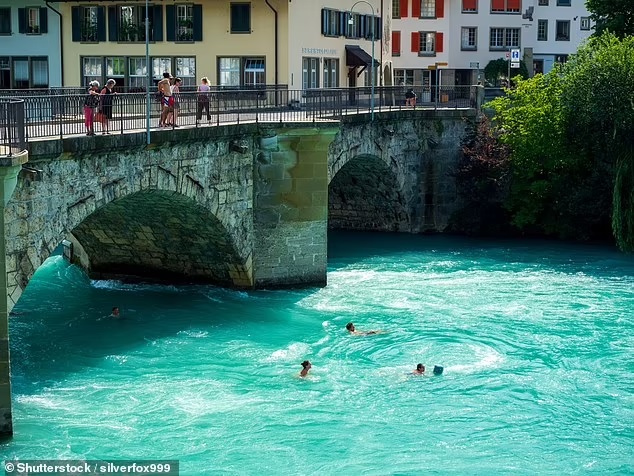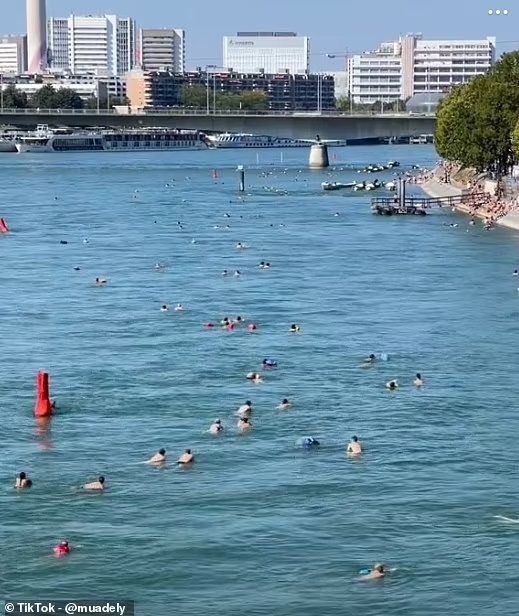To begin their journey, they carefully pack their clothes, phones, and wallets into waterproof bags, change into their swimwear, and then jump into the river, letting the current carry them home.
Local resident Evelyn Schneider-Reyes says this mode of transport is very efficient. "It only takes me 30 seconds to walk from the office to the riverbank, and about 15 minutes to float home, instead of hours on the road," she said.
The Aare River, the main tributary of the Rhine, stretches 292 km and is the longest river in Switzerland.
For many residents of the two cities, this long, leisurely route not only helps them avoid the rush hour chaos but also serves as a therapeutic activity. Participants can relax in the clear water, admire the cityscape and historical landmarks, and de-stress after a long day.
This unique commute, which begins in the summer, attracts people of all ages, from adults and children to tourists.
Entering the river is quite simple. Swimmers can choose entry and exit points equipped with hanging ladders or steps, marked by red posts. Along the riverbanks, the local authorities have also provided small cabins for changing rooms, showers, and public restrooms.
Before donning their swimwear, people place their clothes and personal belongings into a waterproof bag called a "Wickelfisch," a local icon. Designed in the shape of a fish, it not only keeps belongings dry but also acts as a flotation device.
 |
Commuters in Bern, Switzerland, swim along the Aare River to get home after work. Photo: Shutterstock/silverfox999 |
This unique activity has charmed many on social media, with some calling it a "fairytale" lifestyle.
However, swimming in large rivers like the Rhine and Aare carries inherent risks due to the strong currents. Local authorities continually emphasize the importance of following safety regulations.
"As long as you're a good swimmer and follow the rules, this is one of the best experiences," wrote travel blogger Desiree.
 |
Many people in Switzerland follow the current of the Rhine River to get home after work. Photo: @Muadely |
Some recommended safety rules: Plan your exit point in advance, as the strong current can carry swimmers past their intended stop. Entry and exit points are marked by red posts or steps. Always swim on the right side of the river; the left side is reserved for boats. Swim only when in good physical condition. Avoid swimming when tired or after consuming alcohol. Never swim alone; always go with someone else for support if needed.
Minh Phuong (via Insider, News.com.au, Daliymail)












